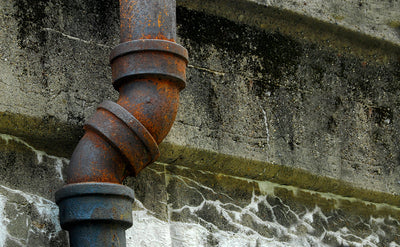American's Can't Afford Their Water Bills
RSS
Analies Dyjak | Policy Nerd
Our Water Nerds are following a largely under-reported story that’s crippling communities throughout the United States, particularly in Detroit, Michigan. Amid a pandemic, Detroit residents are left without running water. The cost of water and sewer has increased more than 60% in the past 10 years, leaving many residents unable to pay their bills. This article will break down why utility bills are higher than ever in 2020, and why the United States is in desperate need of capital water infrastructure improvements.
Why Are Water Rates In The United States So High?
Water infrastructure improvements are a necessary investment to ensure that all Americans have access to safe and affordable water. The reality is that infrastructure in the U.S. is outdated. Millions of individuals are drinking water coming from distribution pipes that are 150 years old. The state of water infrastructure is so bad that the American Society of Civil Engineers gave the United States a “D Grade" just for water infrastructure. Cities and towns are retroactively trying to update water distribution networks as quickly (and cheaply) as possible. Although these improvements are not cheap, they are absolutely necessary.
Why Do We Need To Update Our Nations Water Infrastructure?
The short answer to this question can be summed up by what happened in Flint, Michigan. At the beginning of 2014, Flint residents were exposed to extremely high levels of lead that were hidden in the city's water distribution network. When the city switched over to a more corrosive water source, the lead levels sky-rocketed. Flint is not alone. New York City, Los Angeles, Pittsburgh, Portland (OR), and Denver all have lead levels that exceed public health goals. Because of the dangerous health impacts associated with lead exposure, preventing similar future incidents is extremely important. The good news is that a majority of funding for water infrastructure improvements are going towards Full Lead Service Line Replacement programs.
Who Pays For Water Infrastructure Improvements?
Historically, the federal government paid for a majority of capital improvements, including water infrastructure. The financial burden has since shifted to state and local governments. In 1977, 63% of capital expenditures for water infrastructure and improvements came from the federal government. Currently, federal contributions only account for 9% of total water infrastructure improvements. This places an enormous financial burden on states and localities who are already dealing with other important public health issues. The bottom line is that money to fund water infrastructure projects now comes from the tax base. In already poor communities, increased utility rates can put a huge strain on families, causing them to stop paying for and using water altogether.
Detroit, Michigan: Priced-Out of Basic Human Rights
Infrastructure improvements have increased utility rates to the point that Detroit residents are unable to pay their water bills. APM Reports compiled data from the City of Detroit regarding the cost of water bills over the past 10 years. The average water and sewer bill for a family of four in Detroit has increased 65% since 2010, which further breaks down to an annual expenditure of $1,151.Our Take
A crumbling water infrastructure has the potential to affect every single American. Rural communities that have a smaller tax base require a broader geographical spread of infrastructure improvements. On the other hand, larger cities must navigate a very complex web of distribution pipes. The reality is that capital infrastructure improvements will take time, and will be very costly for ratepayers nationwide.
Other Articles We Think You Might Enjoy:
Why Are So Many Schools Testing Positive For Lead?
America's Water Infrastructure Act of 2018
Are Hydroviv Water Filters NSF Certified To Remove Lead?




